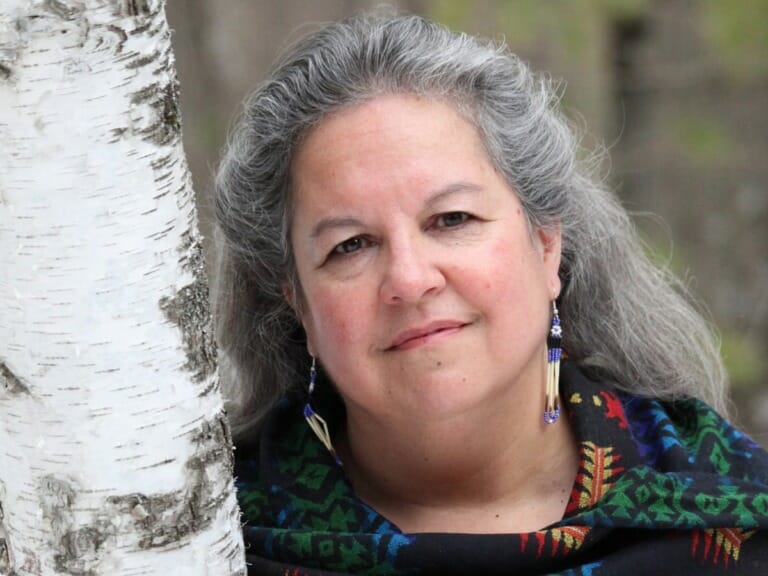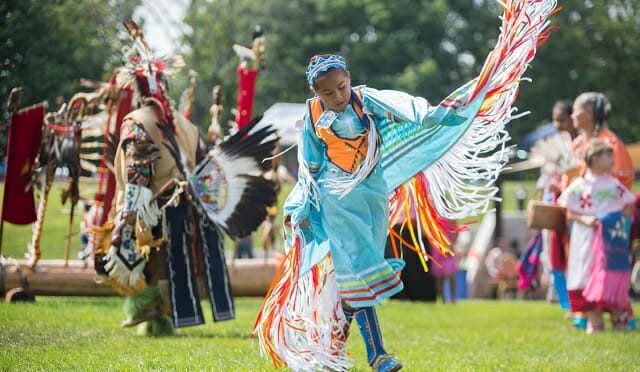Scientific animism? Or is it Scientific animism? This sounds like an oxymoronic contradiction. Animism, the belief that natural things – plants, mountains, stones, rivers, animals – are inhabited by spirits, bears a connotation of “primitive” and “childish,” of Disneyfied fantasies about animals talking to humans. Modern science is more likely to insist that only humans are sentient subjects and the rest of the material world inanimate objects.
In this article, I suggest that animism and environmental science can be partners in ecological restoration. My argument is based on the work of Robin Wall Kimmerer, a Botanist who is Distinguished Teaching Professor of Environmental and Forest Biology at the State University of New York and the author of a bestseller Braiding Sweetgrass: Indigenous Wisdom, Scientific Knowledge and the Teaching of Plants that has garnered over 8,000 ratings on Amazon, an extraordinary record for a non-fiction book. Her finding that both scientific reasoning and a better understanding of “the grammar of animacy” are necessary to sustain life on our planet resonated with me: Consider that our apocalyptic era of plague and wind, fire and flood is nature’s response to human industrial development and scientific empiricism.

Kimmerer asserts that a “settler” frame of mind has led to a “Dishonorable Harvest”, an irresponsible consumerism where “we take what doesn’t belong to us and destroy it beyond repair.” In contrast, the principle of “Honorable Harvest,” a long-held ecological ethic of many indigenous tribes, allows you to “take only what you need for sustenance while respecting the needs of the plant and animal beings.”
As I will explain later, my use of Kimmerer’s scientific and spiritual findings could be seen as cultural appropriation. In our hunger for an earth-centered spirituality, we white American “settlers” have a deplorable tendency to adopt the world-views of the very Native Americans against whom we waged a vicious physical and cultural genocide.
Cherokee writer Andrea Smith notes (in her aptly titled For all those who were Indian in a former life) “that our interest in Native American traditional spirituality, with its respect for nature and the interconnectedness of all things…is not based on a respect for Indian spirituality” but on “a very old story of racism and white genocide against Indian people.” This cultural expropriation seems especially ludicrous when she considers that whites “seem determined not to look into their own cultures for sources of strength. This is puzzling since pre-Christian European cultures are also earth-based and contain many of the same elements that [whites] are ostensibly looking for.”
Or, as my Native American students put it, “Why don’t you leave our traditions to us, and find some of your nice Anglo-Pagan ancestors to write about?”
Western Theological Immanentism
Though the result of their suggestion was my novel series about the Fen dwellers of East Anglia, I didn’t have to go all of the way back to pre-Christian “paganism” to find earth-centric spirituality among my ancestors. The idea that nature is infused through and through with divinity characterized Western European Christianity until the 10th century CE.
My first hint of this came while researching my book about the poet Dylan Thomas, whose Welsh forebears practiced Unitarian immanentism. Like American Transcendentalists, they understood divinity as simultaneously present in and extending beyond materiality. This should not be confused with supernaturalism, which locates divinity entirely outside of nature, or with pantheism, which takes nature as all that there is.
This earth-valuing theology derives from Jesus’s teaching that the Kingdom of God is already here and that we share an earthly paradise with the rest of nature. Reporting on their research on Christian iconography In Saving Paradise: How Christianity Traded Love of This World for Crucifixion and Empire, the two Lutheran pastors, Rita Nakashima Brock and Rebecca Ann Parker, found many representations of Jesus in flowering meadows surrounded by friendly animals, but, until the 10th century CE, no crucifixions whatsoever. They were astonished that, “As the paradise of early Christianity entered our consciousness, crucifixion-centered Christianity seemed increasingly strange to us. We wondered what had happened to the understanding of this world as paradise.”
My academic research yielded further proof that European Christians revered the spirituality of the natural world.
I spent my academic career as a student of archetypes – symbols that recur through a wide swath of history- and was fascinated by the “green man” figure who hangs on pub signs all over England and, in America, can be purchased as a garden ornament.
At Norwich Cathedral, which was built in 1006 CE, I found a line of them carved along the central beam of the whole length of the Gothic cloister, each carved and painted differently They were apparently intended as focuses for monastic contemplation:

The Green Man represents the presence of the divine in nature. He radiates mysterious wisdom along with wry humor that we don’t often associate with religion. “As cosmic man or the personification of the intelligence in the tree of life,” writes William Anderson, “the Green Man is the point at which truth is manifested in creation, whether as life, light, song, words or the figurative forms.”
The people who lovingly carved these representations were not pagans; they were practicing a Christianity close enough to its historic pre-crucifixion theology to revel in nature as a manifestation of God’s kingdom.
Every single morning of the twelve years I attended school, we recited the Benedicite. “O ye Sun and Moon,” our principal would call out, “Bless ye the Lord,” to which everyone chorused in response, “Praise him and magnify him forever.” On and on we went, urging frost and cold, fire and heat, sun and moon, the whales in the sea, the fowls in the air and the stars of heaven, to join us in praise for our creator.
I can only think that this Canticle (which is used in both Roman Catholic and Protestant worship) derives from the long-forgotten strain of Christian animistic spirituality antedating the degradation of the earth to a mere proving-ground from which disembodied souls long to escape.
The Grammar of Animacy
The Thanksgiving Address of the Haudenosaunee or Iroquois, which, according to Kimmerer, is recited by the children of that tribe at the start of school every morning, is astonishingly like our Christian Benedicite in its traditional expression of gratitude to “the Thunder Beings,” “our Grandmother, the Moon,” and “the Four Winds,” among a catalogue of one natural being after another. After describing the benefits each bestows upon humans, the children chorus their agreement about respect and gratitude (“now our minds are one.”)
Kimmerer is not only a well-known botanist. She is also a member of the Potawatomi Nation and an advocate for a synthesis of modern science and traditional tribal animism. Fearing that in quoting the Thanksgiving Address of another tribe, she might be indulging in cultural appropriation, she asked permission of the Haudenosaunee.
The Haudenosaunee replied: “Of course you should write about it. It is supposed to be shared, otherwise, how can it work? We’ve been waiting five hundred years for people to listen. If they’d understood the Thanksgiving then, we wouldn’t be in this mess.”
It is in that spirit that I focus this article on Kimmerer’s blend of science and animism to propose her vision of “a time when the intellectual monoculture of science will be replaced with a polyculture of complementary knowledges.”
To give an idea of what that “polyculture” – integrating traditional knowledge with the scientific “monoculture” – looks like, here are a few examples.
The Case of Sweetgrass: Traditional Wisdom vs. the Scientific Method
Kimmerer was asked by some tribal basket makers of the Potawatomi, a Native American people of the Great Plains, upper Mississippi River, and western Great Lakes region, to figure out why the sweetgrass they have traditionally used seems to be disappearing. In approaching her academic department, however, she came up against “a barrier of language and meaning between science and traditional knowledge,” between “the teachings of grass” and the “tight uniform of scientific thinking and technical writing that is required of the academy.”
She and the graduate student she assigned to write a dissertation underwent an embarrassing session when the academic committee scorned the traditional Potawatomi theory that “if we use a plant respectfully, it will flourish. If we ignore it, it will go away.” The academics found it laughable: “everyone knows that harvesting depletes a crop.”
What ensued was a careful process of rigorous scientific methodology – Theory, Introduction, Literature Review, Hypothesis, Methods, Results, Discussion, and Conclusions. They designed experiments to analyze two different modes of traditional sweetgrass harvesting.
Preliminary observations revealed two harvesting methods: Some tribal gatherers took only half of what they found, pinching them off above the base and leaving trail marks to tell others not to take any more from that location; others just yanked them up willy-nilly. Over a period of two years, Kimmerer and her student established three experimental plots – one for each method, and one where nothing was done at all.
Their data demonstrated that this untouched plot was entirely denuded of sweetgrass. Both plots that had been picked over flourished, proving that harvesting stimulates growth.
What was notable was that the sweetgrass did best where it had been yanked up, a treatment that apparently kickstarted even more regrowth than careful pinching. Kimmerer and her student scientifically validated the traditional tribal understanding – which was based on centuries of observation, gathering and comparison of the results of experience.
In short, the plant needs the gatherer as the gatherer needs the plant.
The sweetgrass experiment demonstrated that Kimmerer’s “grammar of animacy” is no mere fairy-tale conversation between human and other beings but an interaction in which the plant “speaks” to the attentively observing human through the way it behaves – in this case by flourishing as a result of human intervention. “We are linked,” Kimmerer concludes, “in a co-evolutionary cycle. The sweeter the peach, the more frequently we disperse its seeds, nurture its young, and protect them from harm. Food plants and people act as selective forces on each other’s evolution- the thriving of one in the best interest of the other.”
Of course, the opposite is true: if we pollute the skies that have protected and nourished our planet since the earth was formed, those skies will reward us with the fire and wind, floods and torrential rains, rendered more violent than ever before by human violation. Or, we will have indulged once again in “the tragedy of the commons,” whereby we use up rather than share our common resources.
The Grammar of Animacy and Deep Ecology
This traditional Potawatomi understanding is in accord with Deep Ecology’s teaching that unless we begin to treat the earth and non-human beings upon it with greater respect, we will all perish. It runs parallel to David Suzuki’s Declaration of Interdependence written for the 1992 United Nations Earth Summit in Rio de Janeiro in 1992:
“We humans are one of thirty million species weaving the thin layer of life enveloping the earth.
The stability of communities of living things depends upon this diversity.
Linked in that web, we are interconnected – using, cleansing, sharing and replenishing the fundamental elements of life.
Our home, planet Earth, is finite; all life shares its resources and the energy from the sun, and therefore has limits to growth.
For the first time, we have touched those limits.”
As I write, the United Nations has declared the whole earth a “red zone” in imminent peril of losing sustainability. At the same time, Deep Ecology’s insistence that all natural beings must find ways to benefit each other agrees with Native American principles of responsible sustenance for an “Honorable Harvest.”
The Honorable Harvest: Examples of Eco-friendly Methodologies and Applications
To illustrate the principle of “Honorable Harvest”, here are some striking illustrations of who is involved, how to apply it and with what results.
- Can Oysters Protect us? The “Oyster Tecture” Project In a New Yorker article entitled “Manufacturing Nature,” Eric Klinenberg, a professor of sociology and the director of the Institute for Public Knowledge at New York University, describes landscape architect Kate Orff as “at the forefront of an engineering approach to climate resilience that argues we should be building with nature, not just in nature.” She is engaged in such ecological design projects, including one she terms “Oyster Tecture” designed to replace the oyster beds that used to abound in New York City harbors. These are cages filled with oyster shells built for the mutual benefits of oysters and ourselves. Once planted with oyster larvae, these underwater reefs not only filter impurities but also mitigate ocean surges, and provide habitat for eelgrass and its accompanying “aquatic biodiversity.”
- Reading the Grammar of Animacy to Replant Seagrass Off the coast of Virginia, vast swathes of seagrass used to support a complex ecology of eels and fish, mollusks and a diversity of sea life. In the 1930s, a “wasting disease” destroyed it all. Scientists did not give up, however, and in the 1990s found hopeful messages in the sudden appearance of seagrass patches that their ecosystem was again sustainable.
They figured out how to do this by observing seagrass preferences. They tried transplanting, but that didn’t work – the area was far too vast. When they sowed seeds over a wide area, however, it took:
“Over the past 20 years, supported by an army of volunteers, the project team has sown nearly 75 million seeds. About 9,000 acres of coastal bays are now blanketed with eelgrass, which has improved water quality, increased marine biodiversity, and helped mitigate climate change by capturing and storing carbon.”
This “honorable harvest” was based on reciprocity between the scientists and the grasses: “Nature kind of took over. While we continue to put seeds in areas that don’t have eelgrass, nature has been spreading eelgrass naturally.”
- Bison Restoration Jim Robinson writes that in 1908 the United States government took 18,000 acres from two tribes – the Confederated Salish and Kootenai Tribes – to control Bison conservation. Absent the hundreds of years of accrued tribal observation of these revered beings, you can imagine how that worked out.
But now the American Legislate has returned the land to the tribes under America’s Conservation Enhancement Act, placing it under the stewardship of Native Americans, thus resulting in significant Bison recovery.
“We treat the buffalo with less stress, and handle them with more respect,” said Tom McDonald, Fish and Wildlife Division Manager for the tribes and a tribal member. The tribes, he added, recognize the importance of bison family groups and have allowed them to stay together.
“That was a paradigm shift from what we call the ranching rodeo type mentality here,” he said, “ where they were storming the buffalo and stampeding animals. It was really kind of a violent, stressful affair.” Nor is this an isolated tribal example. “From California to Maine, land is being given back to Native American tribes who are committing to managing it for conservation. Some tribes are using traditional knowledge, from how to support wildlife to the use of prescribed fires, to protect their ancestral grounds.”
Clearly, a fluency in the “grammar of animacy,” acquired from respectful and detailed attention to what the natural world tells us, is not opposite to but complementary with rigorous scientific methodologies. “Doing science with awe and humility is a powerful act of reciprocity with the more-than-human world,” concludes Kimmerer. And thus “The canon of the Honorable Harvest is poised to make a comeback, too, as people remember that what’s good for the land is also good for the people.”
The concept of the Honorable Harvest, as it guides us in our interaction with nature, enables us to move away at last from the “tragedy of the commons” and gives us hope for a better, more equitable future.
For anyone interested in more information, here is an upcoming free event with Kimmerer in dialogue with others concerned with inter-relatedness between humans and nature – to be held on 22 September to celebrate the release of the 5-volume set, Kinship: Belonging in a World of Relations (Center for Humans and Nature) with editors and contributors Gavin Van Horn, John Hausdoerffer, Robin Wall Kimmerer, and more. Click here to register for the event.
Editor’s Note: The opinions expressed here by Impakter.com columnists are their own, not those of Impakter.com. — In the Featured Photo: Potawatomi powwow dancing. The Gathering of Potawatomi Nations is hosted each year by one of the nine nations of Potawatomi spread across the United States and Canada, providing an opportunity for the various members to come together and celebrate their Potawatomi heritage. It includes a language conference, cultural workshops, language classes, cultural classes and sporting events. Source: Potawatomi.org blog










